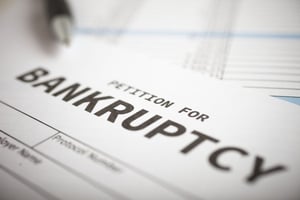 When all is said and done, the end result of all the information you have given us, as well as the reports we have collected is a fully completed and true bankruptcy petition. This hunk of paper is essentially your entire financial life laid out for the bankruptcy court. Once your case is filed, you will receive a copy of your petition for your records and at first glance, it seems like a bunch of legalese mixed with some gibberish for good measure. So, exactly what information does the petition all hold?
When all is said and done, the end result of all the information you have given us, as well as the reports we have collected is a fully completed and true bankruptcy petition. This hunk of paper is essentially your entire financial life laid out for the bankruptcy court. Once your case is filed, you will receive a copy of your petition for your records and at first glance, it seems like a bunch of legalese mixed with some gibberish for good measure. So, exactly what information does the petition all hold?
Your petition is made up of “schedules.” Essentially, these are different sections that deal with different aspects of your finances as well as contain a variety of legal forms that your attorney will explain to you in detail.
The first schedule lists the debtor’s property. This is all of your stuff. Homes, vehicles, estimates of household goods, electronics, clothes, jewelry, bank accounts, stocks and bonds, and even pets! Property is a broad subject and schedules ‘A/B’ of your bankruptcy petition cover it all.
Schedule ‘C’ delves into which aspects of your property are exempt. Your experienced bankruptcy attorney can explain the nuances of the exemptions during your review and sign appointment.
Schedules ‘D’ & ‘E/F’ are all about your creditors. Which have secured claims? Which have unsecured claims? What are the total claim amounts for each?
After that, your petition lists any co-debtors. Did mom or dad co-sign on a personal loan or car loan for you? That information needs to be disclosed in your petition.
Finally schedules ‘I’ and ‘J’ cover the debtor’s income and the debtor’s expenses.
As you can see, your bankruptcy petition covers a lot of ground. It’s important to ensure this information is accurate so that your case goes smoothly through the courts and you receive your discharge as soon as possible.
Conclusion
A complete and true bankruptcy petition is an easy task for Minnesota’s NICEST and MOST EXPERIENCED bankruptcy law firm so call Kain & Scott today or request a consultation at www.kainscott.com.


